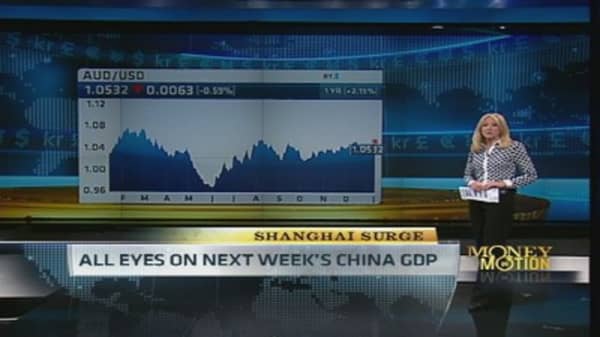Other big economies may be stuck in the doldrums - I'm talking to you, euro zone - but if the past week's report on exports is any indication, China is back on the fast track.
The thing is, plenty of key reports are about to be published, so China watchers will have a lot to sort through before the outlook becomes clear.
In the coming week, "the focus is going to be on thatfourth quarter GDP report" says Rebecca Patterson, chief investment officer at Bessemer Trust. If that number is solid, and jibes with other reports on retail sales, industrial production, and fixed asset investment, "then the stars really align and you're going to Chinese related assets take off."
The way to play that with currencies, Patterson told CNBC's Melissa Lee, is with the Australian dollar. China is Australia's largest trading partner, so she wants to buy the Aussie against the U.S. dollar on a pullback.




